Bühligen, Kurt, born 13-12-1917, in Granschütz, in Province of Saxony  of the German Empire, the son of a pipefitter. Kurt joined the military service of the Luftwaffe
of the German Empire, the son of a pipefitter. Kurt joined the military service of the Luftwaffe  with Flieger-Ersatz-Abteilung (Aviator Replacement Unit) in Oschatz on 13-03-1936. Following his recruit training he served as an aircraft mechanic with Kampfgeschwader 153 (KG 153—153rd Bomber Wing) from September 1937 to 15 February 1938. Bühhligen then served as a mechanic with 2. Staffel (squadron) of Kampfgeschwader 4
with Flieger-Ersatz-Abteilung (Aviator Replacement Unit) in Oschatz on 13-03-1936. Following his recruit training he served as an aircraft mechanic with Kampfgeschwader 153 (KG 153—153rd Bomber Wing) from September 1937 to 15 February 1938. Bühhligen then served as a mechanic with 2. Staffel (squadron) of Kampfgeschwader 4  (KG 4—4th Bomber Wing) from 16-02-1938 to 30-04-1939.
(KG 4—4th Bomber Wing) from 16-02-1938 to 30-04-1939.
Initially trained as an aircraft mechanic, after the outbreak of World War II, he was trained as a pilot. World War II in Europe had begun on Friday 01-09-1939 when German forces invaded Poland.
In June 1940, he was posted to Jagdgeschwader 2 “Richthofen” (JG 2—2nd Fighter Wing).  its first commander was Oberst Robert Ritter von Greim.
its first commander was Oberst Robert Ritter von Greim.  He fought in the Battle of Britain
He fought in the Battle of Britain

 and claimed his first aerial victory in that campaign on 04-09-1940.
and claimed his first aerial victory in that campaign on 04-09-1940.
At the time, 2. Staffel was under the command of Oberleutnant (First Lieutenant) Karl-Heinz “Heino” Greisert.  On 22-07-1942, age 34, Greisert became engaged in a low-level aerial combat with Russian I-16 fighters. His Bf 109 F-4 aircraft was damaged and he was forced to bail out. Greisert escaped from his aircraft but being at very low altitude his parachute failed to open fully before he struck the ground, and he was killed.
On 22-07-1942, age 34, Greisert became engaged in a low-level aerial combat with Russian I-16 fighters. His Bf 109 F-4 aircraft was damaged and he was forced to bail out. Greisert escaped from his aircraft but being at very low altitude his parachute failed to open fully before he struck the ground, and he was killed.
On 04-09-1940, Bühligen claimed his first aerial victory, a Hawker Hurricane 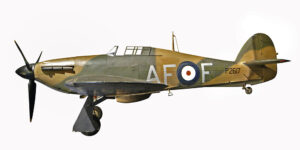 shot down over Dover. He was then transferred to 6. Staffel, a squadron of II. Gruppe (2nd group) of Jagdgeschwader 2. There, Bühlingen frequently flew as wingman to Greisert. Greisert had been placed in command of II. Gruppe on 2 September. In September 1940, Bühligen claimed three aerial victories, a Hurricane on 11 September and a Supermarine Spitfire fighter
shot down over Dover. He was then transferred to 6. Staffel, a squadron of II. Gruppe (2nd group) of Jagdgeschwader 2. There, Bühlingen frequently flew as wingman to Greisert. Greisert had been placed in command of II. Gruppe on 2 September. In September 1940, Bühligen claimed three aerial victories, a Hurricane on 11 September and a Supermarine Spitfire fighter  on 26 and 30 September each. Following three further victories claimed in October, he was awarded the Iron Cross 1st Class (Eisernes Kreuz erster Klasse)
on 26 and 30 September each. Following three further victories claimed in October, he was awarded the Iron Cross 1st Class (Eisernes Kreuz erster Klasse) 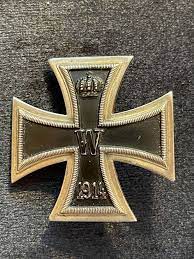 on 29-10-1940. Bühligen claimed one further aerial victory on 07-11-1940, a Hurricane southeast of the Isle of Wight, before he was transferred to 4. Staffel, also a squadron of II. Gruppe.
on 29-10-1940. Bühligen claimed one further aerial victory on 07-11-1940, a Hurricane southeast of the Isle of Wight, before he was transferred to 4. Staffel, also a squadron of II. Gruppe.
On 18-06-1941, II. Gruppe moved from Beaumont-le-Roger to Abbeville-Drucat where it stayed for the next six months. From this point on, the Gruppe defended against the RAF Fighter Command  “non-stop offensive” over France. In July and August 1941, while flying with 4. Staffel, Bühligen claimed seven Spitfires shot down, one on 7 July, two on 10 July, one on 11 July, two on 23 July and another on 7 August respectively. He then served with the Stab (headquarters unit) of JG 2 and claimed six further aerial victories in August and September 1941, one Hurricane and five Spitfires. One year after his first aerial victory, Bühligen was awarded the Knight’s Cross of the Iron Cross (Ritterkreuz des Eisernen Kreuzes)
“non-stop offensive” over France. In July and August 1941, while flying with 4. Staffel, Bühligen claimed seven Spitfires shot down, one on 7 July, two on 10 July, one on 11 July, two on 23 July and another on 7 August respectively. He then served with the Stab (headquarters unit) of JG 2 and claimed six further aerial victories in August and September 1941, one Hurricane and five Spitfires. One year after his first aerial victory, Bühligen was awarded the Knight’s Cross of the Iron Cross (Ritterkreuz des Eisernen Kreuzes)  on 04-09-1941. At the time he was credited with 21 aerial victories and 15 tethered balloons shot down.
on 04-09-1941. At the time he was credited with 21 aerial victories and 15 tethered balloons shot down.
On 01-01-1942, Bühligen was promoted to Leutnant (second lieutenant). In March 1942, II. Gruppe began converting to the Focke-Wulf Fw 190  radial engine fighter aircraft. Conversion training was done in a round-robin system, Staffel by Staffel, at the Le Bourget Airfield near Paris. The conversion completed by end-April. From then on, the Gruppe was equipped with the Fw 190 A-2 and A-3 variant. Bühligen was appointed Staffelkapitän (squadron leader) of 4. Staffel of JG 2 on 01-08-1942, thus succeeding Oberleutnant Jürgen Hepe who was transferred.[13] He claimed his first aerial victories as Staffelkapitän during the Dieppe Raid on 19 August. That day, II. Gruppe claimed 26 aerial victories, including four Spitfires shot down by Bühligen, for the loss of four Fw 190s.[14] In early November, the Gruppe moved from Beaumont to Merville before ordered to relocate to the Mediterranean Theater.
radial engine fighter aircraft. Conversion training was done in a round-robin system, Staffel by Staffel, at the Le Bourget Airfield near Paris. The conversion completed by end-April. From then on, the Gruppe was equipped with the Fw 190 A-2 and A-3 variant. Bühligen was appointed Staffelkapitän (squadron leader) of 4. Staffel of JG 2 on 01-08-1942, thus succeeding Oberleutnant Jürgen Hepe who was transferred.[13] He claimed his first aerial victories as Staffelkapitän during the Dieppe Raid on 19 August. That day, II. Gruppe claimed 26 aerial victories, including four Spitfires shot down by Bühligen, for the loss of four Fw 190s.[14] In early November, the Gruppe moved from Beaumont to Merville before ordered to relocate to the Mediterranean Theater.
Promoted to an officers rank, Bühligen was appointed squadron leader of the 4. Staffel (4th squadron) of JG 2 in April 1942. In November 1942, his unit was transferred to the Mediterranean and theatre where he claimed his 50th aerial victory in February 1943. Back on the Channel Front, he was appointed commander of the II. Gruppe (2nd group) of JG 2 in April 1943. Following his 96th, Bühligen was awarded the Knight’s Cross of the Iron Cross with Oak Leaves  in March 1944. In April 1944, he replaced Major Kurt “Kuddel” Ubben
in March 1944. In April 1944, he replaced Major Kurt “Kuddel” Ubben 
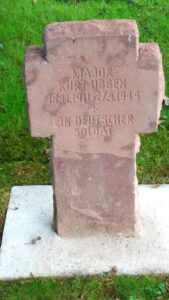 Major Ubben as commander of JG 2. 27-04-1944, age 32, near Fère-en-Tardenois, German-occupied France was shot down in Focke-Wulf Fw 190 A-8/R2.
Major Ubben as commander of JG 2. 27-04-1944, age 32, near Fère-en-Tardenois, German-occupied France was shot down in Focke-Wulf Fw 190 A-8/R2.  Kurt bailed out but his parachute failed to open either due to insufficient altitude or because of an improperly fastened harness.
Kurt bailed out but his parachute failed to open either due to insufficient altitude or because of an improperly fastened harness.


Kurt Buhligen, Hans-Joachim “Acim” Jabs  Berhard Jope,
Berhard Jope, 
 Hans Georg Batcher
Hans Georg Batcher  Luftwaffe signed print undated Hitler awarding Knights Cross to: Kurt Buhligen – 112 victories Hans-Joachim Jabs – 50 victories Berhard Jope – bomber pilot Hans Georg Batcher – 658 bomber missions print is signed on the lower blank margin by all 4.
Luftwaffe signed print undated Hitler awarding Knights Cross to: Kurt Buhligen – 112 victories Hans-Joachim Jabs – 50 victories Berhard Jope – bomber pilot Hans Georg Batcher – 658 bomber missions print is signed on the lower blank margin by all 4.
 Leutnant Paul Mungersdorf, his younger brother Wilhelm and Major Kurt Buhligen on Mother’s Day 1944.
Leutnant Paul Mungersdorf, his younger brother Wilhelm and Major Kurt Buhligen on Mother’s Day 1944.
Kurt Bühligen claimed his 100th victory on 07-06-1944 and in August received the Knight’s Cross of the Iron Cross with Oak Leaves and Swords after 104 aerial victories.
During the final days of World War II in Europe, Bühligen led JG 2 in operations against the Soviet advance on the Eastern Front. On 18 April, the remnants of JG 2 moved to Cham. Two days later, JG 2 relocated to Berlin Tempelhof Airport via Plzeň where they refueled and moved on to Leck Airfield. 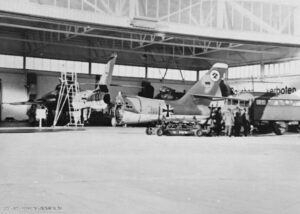 From Leck, JG 2 flew missions in support of the German forces fighting in the Battle of Berlin. At the time, Leck was under constant attack by the RAF. On 23 April, some elements of I. and II. Gruppe which were still based at Cham surrendered to US forces. A few pilots managed to fly to Pocking before moving on to the area of Erding-Holzkirchen-Prien. With 12 aircraft remaining, Bühligen disbanded JG 2 on 30 April while parts of JG 2 were dispersed in Leck and Föching near Straubing. The last elements of JG 2 surrendered to British forces on 8 May at Leck. An engine failure caused Bühligen to be taken prisoner by the Soviets, being finally released in 1950.
From Leck, JG 2 flew missions in support of the German forces fighting in the Battle of Berlin. At the time, Leck was under constant attack by the RAF. On 23 April, some elements of I. and II. Gruppe which were still based at Cham surrendered to US forces. A few pilots managed to fly to Pocking before moving on to the area of Erding-Holzkirchen-Prien. With 12 aircraft remaining, Bühligen disbanded JG 2 on 30 April while parts of JG 2 were dispersed in Leck and Föching near Straubing. The last elements of JG 2 surrendered to British forces on 8 May at Leck. An engine failure caused Bühligen to be taken prisoner by the Soviets, being finally released in 1950.
Death and burial ground of Bühligen, Kurt.


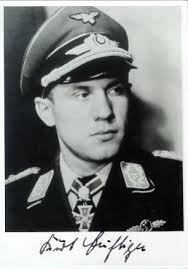

Bühligen was released from captivity and returned to West Germany. He settled in Nidda, Hesse where he ran two car dealerships. Bühligen died on 11-08-1985, age 67, and was buried at the city cemetery at Nidda in Section D, Grave 42




















Leave a Reply